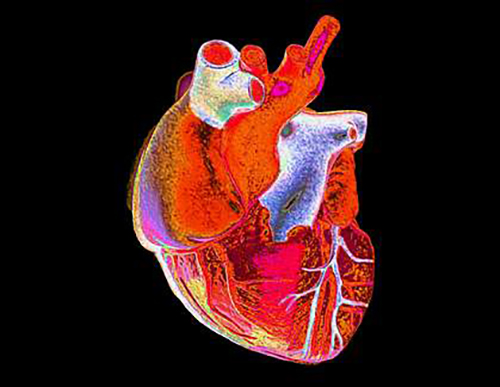
Researchers at University of California San Diego (UCSD) School of Medicine, along with colleagues at Rady Children's Institute for Genomic Medicine have conducted novel whole genome sequencing of a family in which two of four children were affected by Kawasaki disease (KD)—the most common acquired heart disease in children. The new findings, published recently in PLOS ONE through an article entitled “Whole genome sequencing of an African American family highlights toll-like receptor 6 variants in Kawasaki disease susceptibility,” identified plausible gene variants that predispose some children to develop the disease.
“This is the first successful analysis of whole genome sequence from a family that revealed a new gene implicated in KD susceptibility,” noted senior study investigator Jane Burns, M.D., professor, and director of the Kawasaki Disease Research Center at UCSD School of Medicine and Rady Children's Hospital-San Diego. “The finding is intriguing because this gene, a member of the Toll-like receptor family, encodes for a protein that is expressed on the cell surface and uniquely binds to proteins outside the cell that come from fungi. This may be a clue that fungal antigens could be one environmental trigger for the disease.”
Untreated, roughly one-quarter of children with KD develop coronary artery aneurysms—balloon-like bulges of heart vessels—that may ultimately result in heart attacks, congestive heart failure or sudden death. Prevalence rates of KD are increasing among children in Asia, the United States, and Western Europe. In Japan, the country with the highest incidence: 306 out of every 100,000 children under the age of five, with more than 14,000 new cases annually. One in every 60 boys and one in every 75 girls in Japan will develop KD during childhood.
However, incidence rates in the United States are lower—9 to 19 per 100,000 children under age 5—but rising, at least in San Diego County. Predictive models estimate that by 2030, 1 in every 1,600 American adults will have been affected by the disease.
While KD has clear genetic links, most common in the U.S. among persons of Asian or African descent, its overall genetics are complex, and researchers have struggled to identify which gene variants and combinations cause some children to develop the disease. Dr. Burns and her colleagues employed analysis of whole genome sequence (WGS) for the first time to examine a six-member African-American family in which two children had KD, but the parents and other siblings did not.
“Despite their apparent increased susceptibility, children of African-American descent have been excluded from previous KD genetic analysis,” the authors wrote.
Using WGS and genome-wide association studies, to search for genetic variation in large populations, the researchers set out to find distinct gene variants that, in combination, might indicate a predisposition to and a higher likelihood of developing KD. Interestingly the research team identified a variation of the toll-like receptor 6 gene, which plays a fundamental role in the immune system, that may be linked to the pro-inflammatory state during the acute stage of KD. Previous research had not identified this gene as influencing susceptibility to KD.
Additionally, another variant in a gene called tumor-associated calcium signal transducer 2 (TACSTD2), which is involved in cellular calcium signaling, was highlighted but requires further investigation is needed, the authors stated.
“The analysis of whole genome sequence to understand disease genetics is only recently becoming a tool that is affordable and manageable due to new developments in computer science,” Dr. Burns explained. “We are excited to be learning how to harness the power of this analysis to study our children.”
The investigators feel that their analytic approach and use of WGS represents a new method for uncovering relevant gene variants in families affected by not just KD, but many other complex genetic diseases.
“Our next approach will be to compare the whole genome sequence from KD patients with severe heart damage to those with no damage despite no or delayed treatment,” Dr. Burns concluded. “We hope this will lead us to the genetic pathways that result in damage to the coronary arteries, which in turn will suggest new therapies to target those pathways.”











